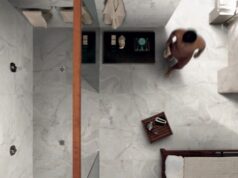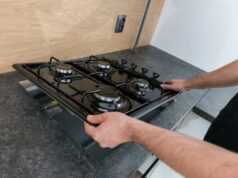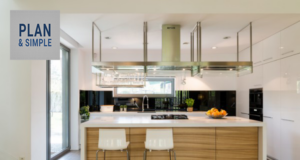
Acrylic sinks are lightweight, come in all shapes and sizes and have the unique benefit of being able to be made to look like porcelain, sandstone or even granite.

Acrylic is a great alternative to stainless steel, and is often favoured as a versatile lookalike for materials like porcelain, sandstone or granite. Because acrylic sinks can be shaped, coloured and textured so readily, they can be made to suit just about any style of kitchen. Acrylics can be formed so that sink basins are either custom moulded directly into the benchtop, or seamlessly attached using a resin designed to conceal the join.
Some of the more commonly used acrylics for sinks and benchtops go under proprietary names like Corian, Corotone, Asterite, Meganite, LG-HIMACS, Staron and Lucite (to name a few).
What are acrylic sinks made from?
Acrylic sinks are normally made from a type of plastic which is cast into sheets, then moulded at a high temperature (‘thermoformed’) to create basins and drain boards. Because the acrylic is non-porous, it won’t stain or degrade like stone might. It is a relatively light material, while at the same time being quite tough.
One of the biggest advantages with most acrylic sinks is that they’re uniformly coloured and textured throughout the entire material. This means that blemishes or scratches on the surface can easily be buffed out using a special acrylic scourer or sander without any visible damage to the sink surface. It’s worth noting that if you do opt for an acrylic sink, you’ll also need to use a special cleaning agent to protect and maintain its surface.
Some acrylics are reinforced by a thick layer of fiberglass,resin or titanium, which makes them stronger, quieter and easier to clean. Different coatings offer different advantages.
Acrylic sinks aren’t necessarily the cheapest thing on the market, but they’re visually striking, extremely versatile and definitely a cost-effective alternative to many of the more expensive natural stone materials like marble and granite, which they’re designed to mimic.
|
Advantages
|
Disadvantages
|





